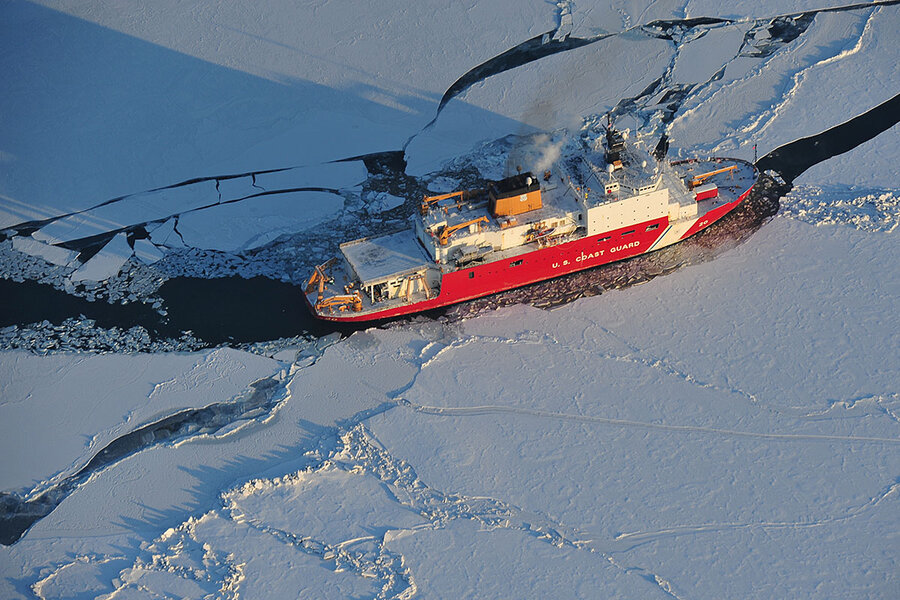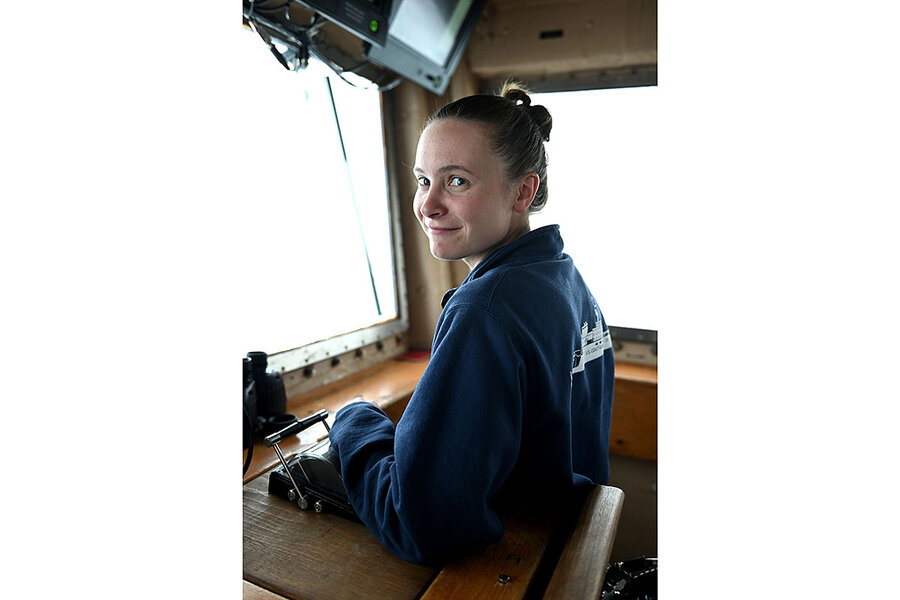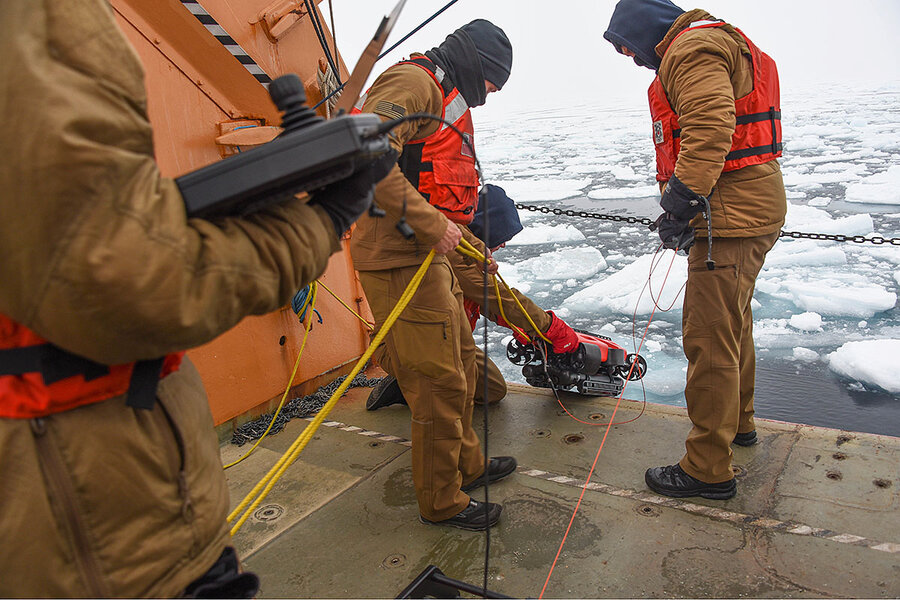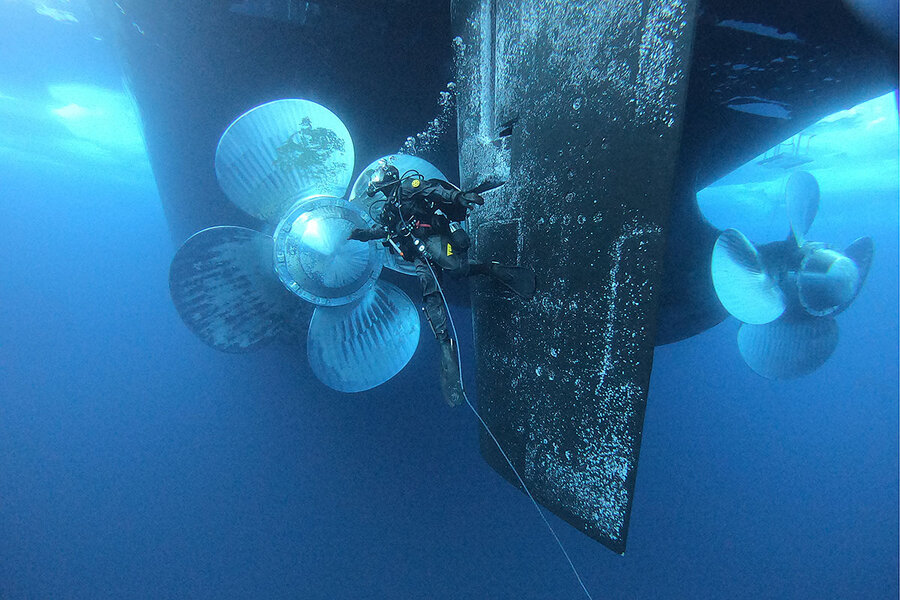Untaming a river: The stakes behind America’s largest dam removal

Doug Struck
Mon, October 18, 2021 
LONG READ
They have been waiting for three years, growing fat and long in the tumult of the Pacific Ocean. Now the salmon turn, inexorably, driven by some ancient smell, into the mouth of a river along the wild Northern California coast.
For millennia, Native Americans watched the fish enter the Klamath River. The tribes celebrated them as a gift from the gods, but the fish numbers dwindled. Once the water teemed with millions of fish; last year, only 46,000 chinook salmon migrated successfully.
Huge dams, proclaimed by newcomers to the region as wondrous monuments to their dominance of nature, and promoted by the U.S. government as a way to open the West to settlers, blocked the fish from their upstream spawning grounds and slowed the Klamath in torpid reservoirs.
Now humanity is set to surrender much of the river back to nature. Four large dams on the Klamath River are due to be torn down in what is called the largest dam removal project in American history.
“It’s massive. It’s huge,” says Amy Cordalis, a legal adviser to the Yurok Tribe, of which she is a member, as she watches a heron lumber along the Pacific coast. “For the tribes and for the Yurok, it’s the beginning of healing. We remove those dams, the river runs free, and the salmon can go home.”
The removal will mark a major victory for environmentalists in their campaign to restore once-wild rivers in the United States by tearing down unneeded dams. It will be a historic victory for Native Americans who were promised eternal fishing rights, only to see fish blocked from their rivers. And it promises to help salmon, once a massive driver of the natural life cycle here in the Pacific Northwest.
But it could be too late. Environmentalists already see fish migrations dwindling in tributaries of the Klamath – a warning of further decline to come – and tribes no longer can count on fish as a source of food and a central part of their culture. Farmers upriver, meanwhile, who depend on irrigation, will continue to lay claim to their share of water from the river system. All of which means that the contentious issues that have swirled around the mighty Klamath for decades won’t vanish with the removal of four massive walls of earth and concrete.
“We are in a race with extinction,” says Michael Belchik, a senior biologist for the Yurok Tribe, of the declining salmon stocks. “And we are losing.”
The dams have foreshortened the ancient fish migration and slowed the Klamath River’s fast and wild run. Drought has stolen water. Climate change has warmed the river, now steeped with toxins and disease.
The Klamath River once strode unimpeded from southern Oregon through Northern California. Its kingdom is an overlooked corner of America, an untamed swath of rugged land and insular people. America knows the legends the area has spawned: the American Indian wars drenched in treachery and blood. The relentless gold rush miners who ravaged salmon streams. The broken treaties. The Bunyanesque loggers felling centuries-old trees. And, in modern times, the environmentalists chaining themselves to hemlock and fir in the name of a small, spotted owl.
“There are layers of culture, of history, of biology,” says Mr. Belchik. “All put together.”
Mr. Belchik, wind whipping at his words aboard a fast jet boat, is following the start of the salmon’s route from the cold waters of the Pacific. To trace the salmon’s journey inland is to see the challenges facing the river, the fish, and the people who depend on both – and how it might all soon change.
The salmon turn from the ocean into a choppy estuary at the ancient Yurok community of Requa, California, beside the town of Klamath. The place is a busy depot: Waves of chinook and coho salmon face upriver for their last brutal trip to spawn and die, meeting young salmon swimming seaward with new silver scales broadcasting a readiness for ocean life. They swim alongside steelhead trout, ropy lamprey eels, and even some massive green sturgeon. Seals prowl. Anglers prey. All mix in the estuary briefly, then go their own ways.
The adult salmon swim toward the continent as the estuary narrows. They dart under the tall slender bridge of Highway 101, the sinuous coastal traffic vein of California.
“From here, the salt water stops. And the salmon will not eat again,” says Mr. Belchik, as the shadow of the bridge passes overhead.
Five miles upriver, the Klamath River becomes shallower. At the helm of the jet boat, Hunter Mattz reads the ripples on the surface. He cuts and weaves like a matador. It seems reckless – rushing forward in a boat with a V-8 engine above shallow rocks. But speed is necessary, the pilot explains. Backing off the throttle would cause the craft to settle in water. He needs it to skim the surface. “I had to learn to press forward, not to hesitate,” Mr. Mattz says.
The struggle over fish is a family matter for Mr. Mattz, as it is for many tribal members. His grandfather, Raymond Mattz, was arrested 19 times in the 1960s as authorities tried to force the Native Americans to stop fishing. He finally invited California game wardens to take him away, and eventually won a landmark U.S. Supreme Court decision affirming the Yurok’s tribal rights to fish in their ancestral waters.
“I’ve spent a lot of my time here, fishing,” says the young Mr. Mattz, his long ponytail dancing in the wind.
The salmon wend past the rocks, expending precious power. Eagles patrol the sky. Black bears visit at night. All await the salmon.
Sixteen miles upriver is the first turnoff. The salmon are drawn, in ways humans still do not fully understand, to the place of their birth. A few thousand veer into Blue Creek, whose headwaters lie far up in the Siskiyou Wilderness.
As he chats at the juncture of the creek, Mr. Belchik is distracted. Suddenly the water churns with leaps and splashes. A cloud of fish has brought a harbor seal upstream for a banquet. “Did you see that?” Mr. Belchik exalts. “I just saw a big 20-pound salmon like right there. Big 20-pounder! Wow.”
Mile after mile upriver the salmon swim, past ancient redwoods that somehow evaded the sawyers’ saws, towering Douglas firs, alders, and cottonwoods. The wet air of the coast rises with the land, and drops its rain – more than 100 inches per year – feeding the temperate rainforest.
The fish leave the territory of the Yurok, who have been here for thousands of years. They move forward in the Klamath through deep, spectacular gorges that crease uplifted granite mountains.
Sixty-six miles upriver, the Salmon River bustles in to join the Klamath. The river used to be famous for its surfeit of thousands of chinook each spring. This year biologists counted 95 fish.
In what can be a race of days or a hesitant swim of weeks, the salmon have labored their way more than 100 miles upstream. They reach Happy Camp, California, which flies the three eagle-feathered flag of the Karuk Tribe. The river at the center of the town – and at the tribe’s cultural heart – is tired and foul. The flow of water this far up is weak and the shallow currents intolerably warm for the cold-loving salmon. Blooms of toxic algae threaten the river as well.
Russell “Buster” Attebery, chairman of the Karuk Tribe, rarely eats fish from the river anymore. Mostly, he says, the fish are not there. It is an honored tradition for young men to catch and present salmon to their elders. But the tribe ended the practice four years ago. For its age-old ceremonies celebrating the return of the salmon, the tribe now gets fish from the Yurok on the coast.
“My saddest day as chairman was to tell our elders that we can’t bring them any [local] fish,” says Mr. Attebery, who has headed the tribe for 11 years. “I think the happiest day will be when I tell them that we can.”
The struggling salmon seek shady water in the day, and move at night when the river is cooler – and alive. On a fierce windy night, the Klamath, lit by the moon, turns silver. Its usual gentle shush swells to a thousand voices, and the willows on its banks flail their branches in wild genuflection.
The fish leave the green folds of the Klamath Mountains and enter high steppe plains of volcanic rock. After 175 miles, they reach the Shasta River tributary. In the 1930s, fish counts put the number of chinook salmon in the Shasta at 80,000. Last year, volunteers who walked the river recorded 4,000.
Eventually, as it nears the Oregon border, the river begins to flatten. RV parks, with fat vehicles parked on concrete pads, line its banks. The current picks up, and the fish plunge forward, oblivious of human rafters who float past them on inner tubes.
The fish turn a corner, 190 miles from the ocean where they began. But here, straddling the river, is an imposing red-clay and concrete barrier – the Iron Gate Dam.
There is no ladder, no passage for fish. The wall, 740 feet wide, is the end of the line.
Six dams were built on the Klamath River between 1918 and 1962. The Iron Gate Dam is 173 feet tall. Sluice pipes wind down the face of the dam from the reservoir behind it, ejecting water through two turbines to create hydroelectricity and providing the Lower Klamath a ration of lake-warmed water. Three shorter dams further upriver – the Copco No. 1, Copco No. 2, and John C. Boyle – also were built to bring kilowatts to a rural land.
“This is so easy to be done, the benefit so great, and the cost so little, that it cannot fail to meet with the approval of every citizen,” gushed the Klamath Evening Herald when the dams were proposed in 1901.
The tribes say they were promised a fish passage around or over the dams, but that did not happen. Instead, a hatchery was built at the Iron Gate Dam to insert juvenile salmon into the river, obliterating the ancient spawning pull of more than 400 miles of river and tributaries upstream.
But the dams pool the river in reservoirs, interrupting its pace, and trap sediment. In this drought, the river is low, warm, and slow. That has fueled a disease called Ceratonova shasta, spores released from host worms that thrive in the slower warm current. It can kill young fish. It has claimed, by some estimates, 95% of the juvenile salmon released from the hatchery recently.
Tribal leaders and biologists say the river – once the third most fertile salmon river in the West – may soon have no more salmon.
For 20 years, the tribes argued for restoration of the tributaries that were ravaged by logging and for removal of the dams, or the installation of working fish ladders. It has been a tortured fight. They were bolstered by the 1973 Supreme Court decision that overturned the arrest of Mr. Mattz’s grandfather. The tribes were further empowered by state and federal protections of endangered species, including the Klamath’s coho salmon.
But the fight still got ugly. In 2001, nearly 15,000 farmers, demanding more water for irrigation, mounted a “bucket brigade” protest, symbolically moving 50 pails of water from the river into an agricultural irrigation canal. The administration of George W. Bush then ordered water diverted to the farmers, which contributed to a massive die-off of tens of thousands of fish. Native groups still talk about it with a hushed tone of horror.
This year, in a reversal, federal authorities have cut off the irrigation water to farmers, as the drought has endangered the fish. That has brought an outcry from farmers that they are being sacrificed for salmon.
It’s a “disaster,” says Ben DuVal. Mr. DuVal farms far above the Iron Gate Dam, southeast of Upper Klamath Lake. He runs a 600-acre spread and raises 1,700 cattle on land his grandfather won in a homestead lottery in 1948. The grandfather of his wife, Erika, also secured acreage in the lottery. They hope to pass the farm down to their daughters, Hannah and Helena – “if that’s what they want,” the couple add in unison.
Their community of Tulelake, California, was a government project. It was created when the U.S. Bureau of Reclamation drained swamps, dammed Upper Klamath Lake, and promised irrigation water forever to veterans of World War I and II who would homestead and farm the land. The government also promised fishing rights and water forever to the tribes. That duplicity burdens all of their descendants today: There is not enough water for both.
Outside the DuVals’ home, a 35-foot-high stack of hay bales awaits a buyer. Eventually, a tractor-trailer will haul them to Seattle, where they will be shrink-wrapped and shipped to Japan, South Korea, China, or Saudi Arabia.
“Believe it or not, it’s cheaper to ship it to China than to North Dakota,” says Mr. DuVal. About 1,200 farms in the area grow grain and alfalfa, potatoes and onions with water from Upper Klamath Lake.
But this year, the DuVals and their neighbors feel their livelihoods are endangered. Without the irrigation water, they cannot survive long, he says. Ms. DuVal motions out her sunny kitchen window to a fallow field. “You would not see brown out there; you would see green” in any other year. Their neighbor is sharing his well water, and many farmers are drilling deeper, even though they know the aquifer cannot support them all. “We’ve done a lot of things to get by this year that just aren’t going to work next year,” says Mr. DuVal.
“If we can’t get by for another year,” he adds, “it could very well be the end of our operation.”
“Finding the water is one thing,” Ms. DuVal says at her kitchen table, “but dealing with the mental and emotional struggles as well can ... can break a person.”
The water cutoff has set the overwhelmingly white farmers – “irrigators” – against the defenders of the Klamath River and the Klamath River Indians. Mr. DuVal says he is not opposed to the dam removals – two remaining dams will control the lake level. But he believes the fish will not recover, given the warm and polluted waters.
“We’re putting farms out of business in order to continue doubling down on a theory that’s not working,” he says.
Don Gentry, the white-maned chairman of the Klamath Tribes, headquartered an hour north in Chiloquin, Oregon, acknowledges the dam removals will not be a panacea. Salmon may have to be reintroduced. They have not been seen in Chiloquin, on Upper Klamath Lake, for more than 100 years. But he is also concerned about two other endangered fish.
Known to the tribe as C’waam and Koptu, and called suckerfish by others, the species live in the lake. The adults are hardy and produce millions of juvenile fish each spring. But the young fish cannot survive the warm and polluted waters of Upper Klamath Lake, a shallow basin fouled by nutrients and often choked with toxic blue-green algae. Each year for nearly three decades, all the juvenile fish died by August.
Mr. Gentry frets about hydrology and biology, but it is the cultural loss he feels most keenly. He recalls the traditional catch of the C’waam and presentation to elders.
When he was a teenager, at a time of overt prejudice against Native Americans, the practice “affirmed that I had a place in our community and a purpose,” he says. “It made me the person I am today.”
The tribal members say they are not trying to deprive farmers of all their water, but, in a historical irony, the government is now on their side. State and federal laws say endangered fish must have enough water to survive.
In “normal” years, the removal of four dams downstream would not affect Upper Klamath Lake. Its two remaining dams, with fish ladders, would still control the farmers’ allocations. But climate change is altering normal expectations, and the farmers worry that the government will cut them off again to bolster water supplies for the endangered fish.
And nearly 4 million wild birds that stop on the historic ponds and marshes on their migration are “the last in line for water,” notes Bill Lehman, executive director of the nonprofit Klamath Watershed Partnership. He argues that water allocations must sustain the wetlands that support migrating birds.
In the end, the decision to remove the dams was simply a matter of business. The hydroelectric plants are now owned by the energy company PacifiCorp, which is a subsidiary of Warren Buffett’s Berkshire Hathaway. The owners looked at the requirements for modernizing the old dams – including a court order that they install fish ladders – and concluded the modest electrical power produced by the plants no longer justified their upkeep.
“We won because Warren Buffett decided it was too expensive” to keep the dams, admits Mr. Attebery of the Karuk Tribe.
The dams will be turned over to a legal entity called the Klamath River Renewal Corp., backed by the California and Oregon governments. Earthmovers are scheduled to begin dismantling the dams in two years.
But tensions remain ragged. Mark Bransom is chief executive officer of the new entity, and sometimes meets hostility as he explains the project in local communities. He recalls being confronted in a parking lot one night after a public meeting by two burly men who warned him never to return to the county. They added that they were armed.
“Oh, really?” Mr. Bransom says he told them. “What do you shoot? I carry my Glock .45 everywhere I go.” He offered to show them a shooting stance. “I can hit a 2-inch [target] at 30 feet every single time.” He says the men shuffled away.
Mr. Bransom, who grew up in rural Colorado, says he understands the distrust. “Your grandparents may have worked on these dams,” he tells people at public meetings. “Your ancestors came here to mine and they lost mining. And then they turned to logging and they lost logging – the spotted owl came along. Now agriculture is under assault, because we’re using too much water to grow hay and killing the salmon. So, you know, I understand what you’re saying.”
But Jeff Mitchell, an elder of the Klamath Tribes, says his people also are fighting for their way of life, their culture, and religion.
“We are fish people and we are water people,” says Mr. Mitchell. “We have a few laws that we believe the creator passed down to us, from generation to generation, and one of those is it is our responsibility to protect these fish. If for some reason these fish go away, the creator has told us we will go away. I believe that.”
















